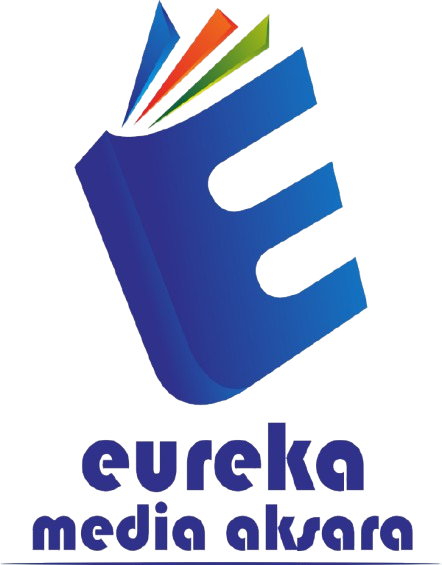Buku Ajar Akuntansi Manajemen
Keywords:
Akuntansi Manajemen, Buku Ajar Akuntansi, Keuangan, InvestasiSynopsis
Di tengah kompleksitas dunia bisnis modern, pengambilan keputusan yang tepat berbasis data keuangan menjadi kunci keunggulan kompetitif organisasi. Buku ini hadir sebagai panduan komprehensif bagi mahasiswa, praktisi, dan pengambil kebijakan untuk memahami akuntansi manajemen secara mendalam, strategis, dan aplikatif.
Kemampuan dalam mengelola biaya, menyusun anggaran, dan menganalisis informasi keuangan internal sangat diperlukan untuk merancang strategi, mengendalikan operasional, hingga mengevaluasi kinerja organisasi. Buku Ajar Akuntansi Manajemen ini disusun secara sistematis dengan menggabungkan konsep teoritis, teknik analisis, serta studi kasus nyata yang relevan dengan kebutuhan akademik dan praktik profesional.
Dengan pendekatan praktis dan bahasa yang mudah dipahami, buku ini mencakup 16 bab utama:
Bab 1 Pengantar Akuntansi Manajemen
Bab 2 Konsep Biaya dalam Akuntansi Manajemen
Bab 3 Sistem Penentuan Biaya Produk
Bab 4 Analisis Biaya-Volume-Laba (CVP Analysis)
Bab 5 Anggaran dan Perencanaan Keuangan
Bab 6 Pengendalian Manajerial dan Akuntansi Pertanggungjawaban
Bab 7 Pengendalian Biaya dan Standar Biaya
Bab 8 Pengambilan Keputusan Jangka Pendek
Bab 9 Analisis Investasi dan Pengambilan Keputusan Jangka Panjang
Bab 10 Analisis Variasi dan Implikasinya terhadap Kinerja
Bab 11 Biaya Relevan dan Pengambilan Keputusan
Bab 12 Akuntansi Manajemen Strategis
Bab 13 Manajemen Biaya dan Value Engineering
Bab 14 Akuntansi Lingkungan dan Keberlanjutan
Bab 15 Teknologi Digital dalam Akuntansi Manajemen
Bab 16 Studi Kasus dan Proyek Akuntansi Manajemen
Buku ini sangat cocok digunakan sebagai referensi dalam perkuliahan maupun panduan praktik di lapangan. Dilengkapi dengan tujuan pembelajaran, soal latihan, dan studi kasus pada setiap bab, buku ini akan membantu Anda mengembangkan kompetensi manajerial berbasis akuntansi secara menyeluruh, profesional, dan berdaya saing tinggi.
References
Anthony, R. N., & Govindarajan, V. (2014). Management control systems (13th ed.). McGraw-Hill Education.
Bebbington, J., Larrinaga, C., & Moneva, J. M. (2014). Corporate social responsibility and environmental management: An evolving research agenda. Accounting, Auditing & Accountability Journal, 27(4), 582-607.
Brigham, E. F., & Ehrhardt, M. C. (2016). Financial management: Theory & practice (15th ed.). Cengage Learning.
Brigham, E. F., & Houston, J. F. (2019). Fundamentals of financial management (15th ed.). Cengage Learning.
Cooper, R., & Slagmulder, R. (1999). Target costing and value engineering. Productivity Press.
Damodaran, A. (2015). Applied corporate finance (4th ed.). Wiley.
Davenport, T. H. (2013). Process innovation: Reengineering work through information technology. Harvard Business Review Press.
Davenport, T. H. (2018). The AI advantage: How to put the artificial intelligence revolution to work. MIT Press.
Drury, C. (2018). Management and Cost Accounting (10th ed.). Cengage Learning.
Eccles, R. G., & Klimenko, S. (2019). The investor revolution. Harvard Business Review, 97(3), 106-116.
Enel. (2022). Sustainability report 2022.
Garrison, R. H., Noreen, E. W., & Brewer, P. C. (2018). Managerial accounting (16th ed.). McGraw-Hill Education.
GSK. (2021). Sustainability and responsibility report.
Gürel, E., & Tat, M. (2017). SWOT analysis: A theoretical review. Journal of International Social Research, 10(51), 994-1006.
Hilton, R. W., Maher, M. W., & Selto, F. (2019). Cost management: Strategies for business decisions (6th ed.). McGraw-Hill Education.
Horngren, C. T., Datar, S. M., & Foster, G. (2014). Cost accounting: A managerial emphasis (15th ed.). Pearson.
Horngren, C. T., Datar, S. M., & Rajan, M. V. (2019). Cost accounting: A managerial emphasis (16th ed.). Pearson.
Horngren, C. T., Sundem, G. L., & Stratton, W. O. (2014). Introduction to management accounting (16th ed.). Pearson Education.
Horngren, C. T., Sundem, G. L., & Stratton, W. O. (2018). Introduction to management accounting (16th ed.). Pearson Education.
Imai, M. (1986). Kaizen: The key to Japan's competitive success. McGraw-Hill.
International Federation of Accountants (IFAC). (2018). Code of ethics for professional accountants.
Johnson, G., Scholes, K., & Whittington, R. (2017). Exploring corporate strategy (11th ed.). Pearson.
Kaplan, R. S. (1990). The balanced scorecard—Measures that drive performance. Harvard Business Review, 70(1), 71-79.
Kaplan, R. S., & Anderson, S. R. (2019). Time-driven activity-based costing. Harvard Business Review.
Kaplan, R. S., & Norton, D. P. (1992). The balanced scorecard—Measures that drive performance. Harvard Business Review, 70(1), 71-79.
Kaplan, R. S., & Norton, D. P. (1996). Using the balanced scorecard as a strategic management system. Harvard Business Review, 74(1), 75-85.
Kaplan, R. S., & Norton, D. P. (2004). Strategy maps: Converting intangible assets into tangible outcomes. Harvard Business School Publishing.
Kieso, D. E., Weygandt, J. J., & Warfield, T. D. (2019). Intermediate accounting (16th ed.). Wiley.
Kumar, S., & Sharma, R. (2020). Cost control and profit maximization: A case study of manufacturing firms. International Journal of Business and Management, 15(3), 45-60.
Kumar, S., & Singh, R. (2019). Green innovation and firm performance: Evidence from the automotive industry. Journal of Cleaner Production, 231, 1234-1244.
Liu, Y., Li, H., & Wang, Y. (2018). Strategic positioning and firm performance: The moderating role of innovation. Journal of Business Research, 88, 1-10.
McAfee, A., & Brynjolfsson, E. (2012). Big data: The management revolution. Harvard Business Review, 90(10), 60-68.
McCarthy, B., McCarthy, S., & McCarthy, M. (2019). Simulation modeling for decision making: A review. Journal of Business Analytics, 4(2), 123-135.
Monk, E., & Wagner, B. J. (2013). Concepts in enterprise resource planning. Cengage Learning.
Niven, P. R. (2014). Balanced scorecard step-by-step: Maximizing performance and maintaining results. Wiley.
Ørsted. (2021). Annual sustainability report.
Petersen, C. M., & Plenborg, T. (2012). Cost management: A strategic emphasis. Pearson Education.
Porter, M. E. (1980). Competitive strategy: Techniques for analyzing industries and competitors. Free Press.
Porter, M. E. (1985). Competitive advantage: Creating and sustaining superior performance. Free Press.
Ross, S. A., Westerfield, R. W., & Jaffe, J. (2019). Corporate finance (12th ed.). McGraw-Hill Education.
Shank, J. K., & Govindarajan, V. (1992). Strategic cost management: The new tool for competitive advantage. Free Press.
Shell. (2022). Sustainability report 2022.
Simons, R. (2013). Levers of control: How managers use innovative control systems to drive strategic renewal. Harvard Business Review Press.
Unilever. (2020). Sustainable living report.
Warren, C. S., Reeve, J. M., & Duchac, J. (2018). Accounting. Cengage Learning.
Y. Liu, H., & Wang, Y. (2018). Strategic positioning and firm performance: The moderating role of innovation. Journal of Business Research, 88, 1-10."





